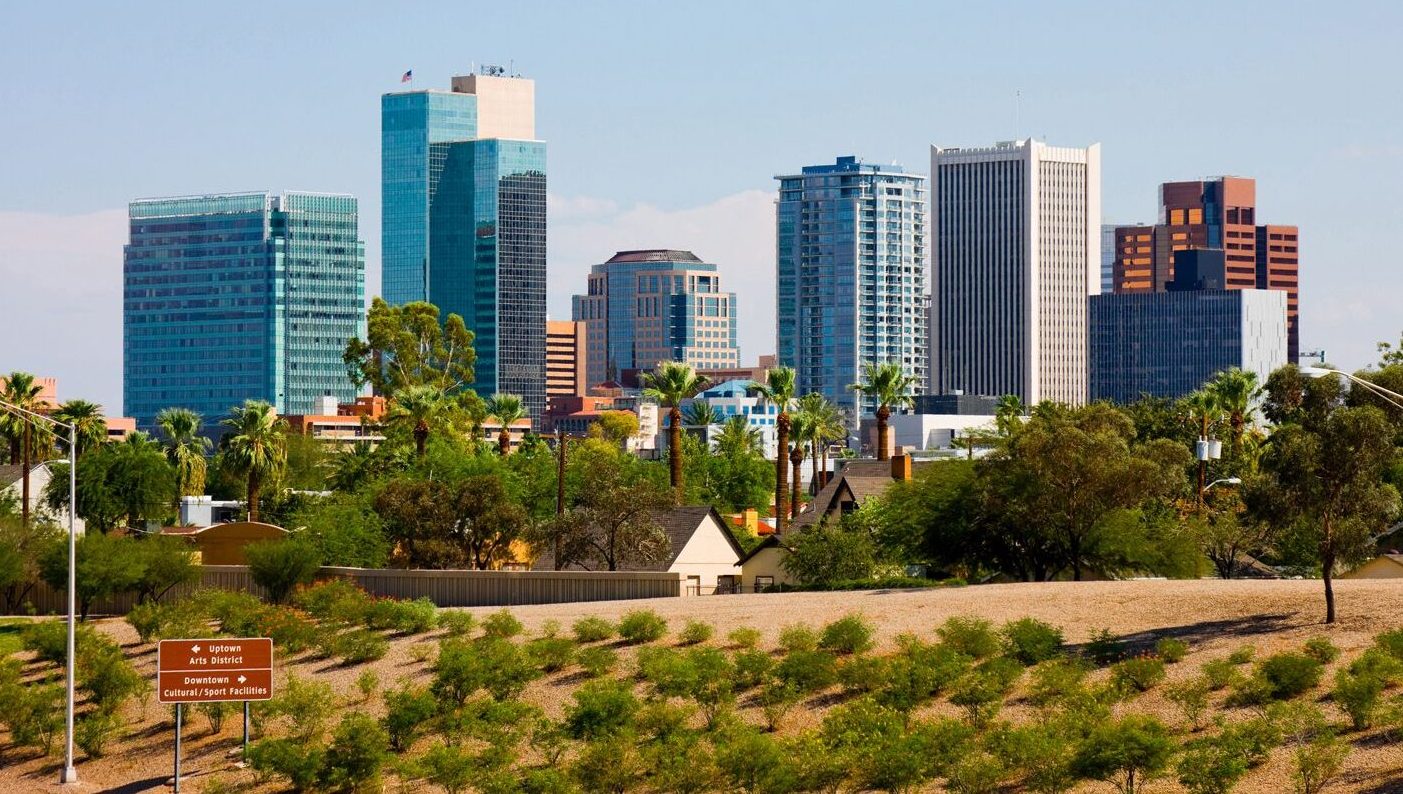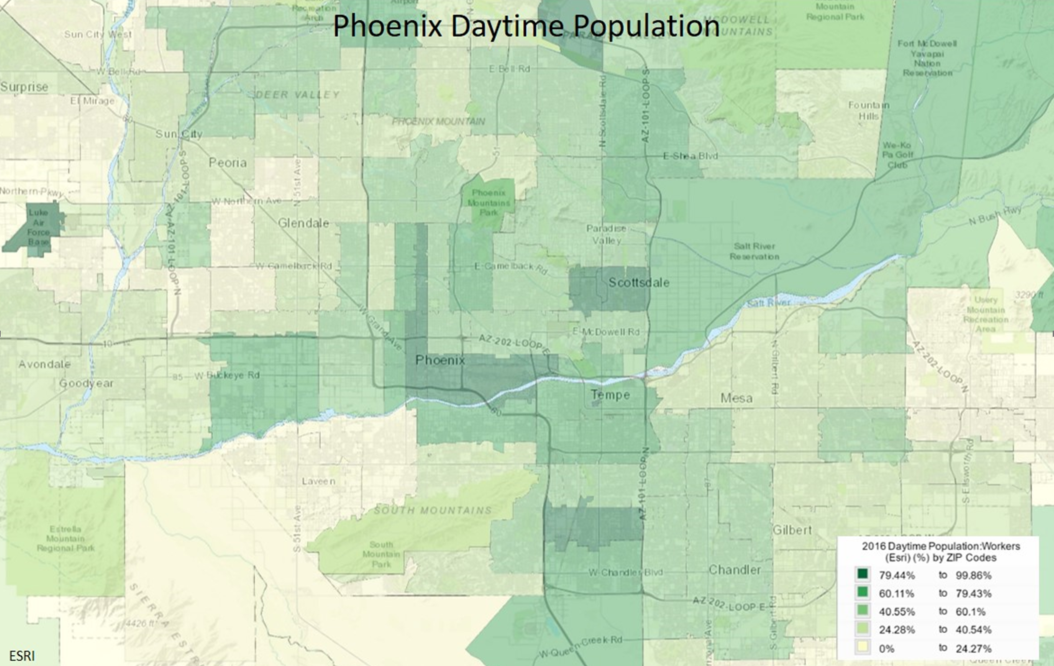Will Phoenix’s Recent Hiring Stumble Interrupt Strong Development Activity?

After several years of healthy growth, job gains in Phoenix stumbled at the end of 2016. Since mid-2014, job growth has averaged roughly 3%. Meanwhile, the 4th quarter 2016 number landed at 1.6% annual growth. Broadly, hiring slowed across multiple employment segments, most notably in Trade/Transportation/Utilities and Professional/Business Services – two segments with a large base in Phoenix. Should job growth continue to slow, an issue of new apartment supply entering the market and lagging demand could materialize, given the aggressive pace of development in Phoenix.
While Phoenix has generally fared well recently, the metro only recently recovered all the jobs lost since the recession. Nonetheless, overall job growth remains behind aggressive growth levels realized in other Southern metros. Since the recession, Phoenix has recovered 4% of the jobs lost, while San Diego, Denver, Dallas, Houston and Atlanta have expanded to almost 10% or greater since 1st quarter 2008. Of the cohort, only Phoenix and Las Vegas are below the national norm. Looking into individual job segments highlights the quality and impact of new growth areas within the local economy.
Within Phoenix, the labor market reorganized itself across a mix of employment segments with both lower-paying and higher-paying salaries. The largest cuts fall within the Mining/Logging/Construction segment; specifically, the subcategory of Construction Contractors has not recovered from pre-recession levels. This is likely a contributing factor to delayed completion times, as construction across the metro remains strong. Meanwhile, the Trade/Transportation/Utilities segment remains flat — Phoenix serves as a main intermodal hub for transportation of goods from West Coast ports.
In terms of new gains, the Education/Health Services segment has expanded 38% since the end of the Great Recession. Diving into this segment, Healthcare/Social Assistance represents the majority of jobs and has fueled much of the growth. That said, salaries within this segment are generally lower, barely breaking $50,000 in Maricopa County according to the Bureau of Labor Statistics. Further, the Information segment made significant strides, growing 22% since the recession; most of these jobs come from the Telecommunications segment (but only represent a narrow segment of the employment base in Phoenix). According to BLS estimates, the typical salary within the Telecommunications segment is roughly $67,700 in Maricopa County, just above the median household income of roughly $55,600 as of 2015. Finally, the Financial Activities segment has fared well, growing 16%. The Phoenix area is a regional hub for financial operations of larger banks and financial institutions. In fact, the location quotient (or concentration of jobs relative to the nation) for Financial Activities in Phoenix is 1.5 – far larger than other segments.
Steady job growth in Phoenix is the result of aggressive local economic development efforts. A number of firms across industries have recently announced relocations or reinvestment in the Phoenix area. State Farm is finalizing consolidation of its Phoenix offices into a $600 million complex at Marina Heights in Tempe. The complex will employ 8,000 by the end of 2019 across customer service, finance and accounting, human resources and IT functions. ADP also recently announced a new Tempe office that will bring 1,500 jobs, and Santander Consumer announced it would bring over 1,000 jobs to Mesa. The latest development is Intel, which recently announced a major investment at one of its Chandler fabrication locations. The company will add another 3,000 high-paying jobs to the area. This reinvestment is an interesting development, as Intel recently planned to cut up to 12,000 jobs due to tightening global competition. What’s more, local economic development efforts have pushed unemployment to new lows. At the end of 2016, the unemployment rate fell to a 4.1%, the lowest level since 2007 and just below the national norm of 4.7%. In conjunction with an expanding and evolving economy, apartment developers returned to build in Phoenix.
Development materially accelerated across major metros in the U.S. in 2010 as developers regained confidence in the market. In Phoenix, the pace of construction has swelled as the metro posted just under 1,000 units in 2010 to roughly 13,600 units in 2015; and at the end of 2016, units under construction tapered slightly to 11,400 with completions of 7,961 units (ranking #11 nationally). Over the last five years, inventory expansion averaged 2.4%, compared with a 10-year average of 1.7%. The local market has responded positively with healthy demand and strong pricing for new leases. The majority of new development has been concentrated in the Central Phoenix, North Central Phoenix, Scottsdale and Tempe submarkets. These areas possess greater concentrations of employment and include greater economic anchors in the area. This is evident by mapping the daytime population for Phoenix – highlighting specifically where employees are present during the typical workday.

With respect to multifamily fundamentals, most measures remain tight in Phoenix – at the end of 2016, occupancy landed at 95.6% and annual rent growth reached 6.5% (ranking #9 nationally). The metro continues to enjoy a late recovery after several quarters of lackluster multifamily performance.
Despite the recent hiring slowdown, the local economy continues to diversify itself through meaningful gains in high-impact employment segments. Phoenix is establishing itself as a regional center in the Southwest and serves as an intersection across major industries. As such, developers are building to support a high-growth economy. While it remains to be seen, the recent slowdown in hiring has the potential to create an imbalance in supply.






